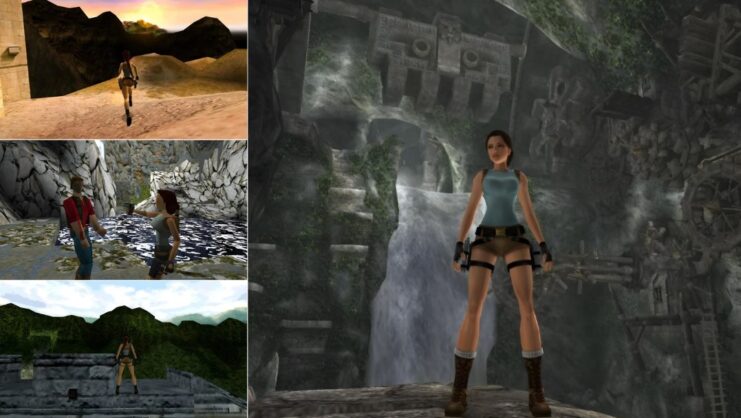Since its inception in 1996, the “Tomb Raider” series has been one of the most popular titles in the gaming world, attracting players with its blend of adventure, exploration, and action.
The franchise, centered around the iconic protagonist Lara Croft, has evolved significantly over the years, spanning various gaming platforms and generations. “Tomb Raider” has consistently pushed the boundaries of gaming technology and storytelling.
This retrospective look at the franchise offers a glimpse into the evolution of this groundbreaking series, highlighting how each game contributed to the legacy of Lara Croft and set new standards in the action-adventure genre.
Let us see all the titles in the franchise in the order of their release.
1. Tomb Raider (1996)
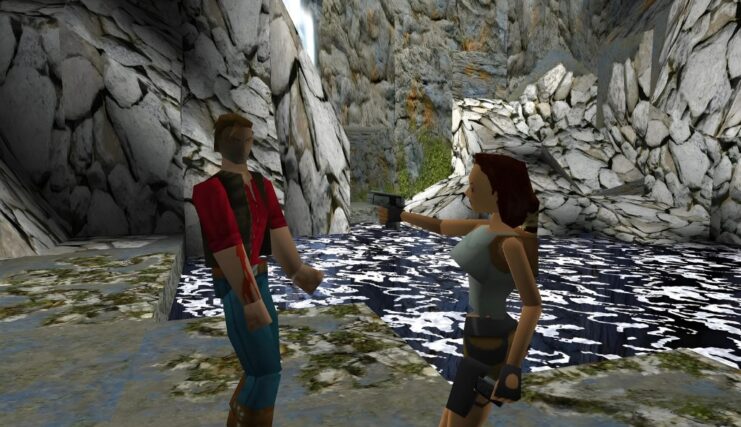
- Developer: Core Design
- Publisher: Eidos Interactive
The game that started it all, the original “Tomb Raider” released in 1996, was a groundbreaking title that introduced players to the iconic character of Lara Croft. Set in a variety of exotic locations, the game combines action, adventure, and puzzle-solving elements.
Players navigated through ancient tombs and ruins, facing dangerous traps and enemies. The game’s 3D graphics were revolutionary for its time, creating a sense of immersion and exploration that was new to the gaming world. Lara Croft, with her dual pistols and acrobatic abilities, quickly became a cultural icon, representing a strong, independent female protagonist in video games.
2. Tomb Raider II (1997)
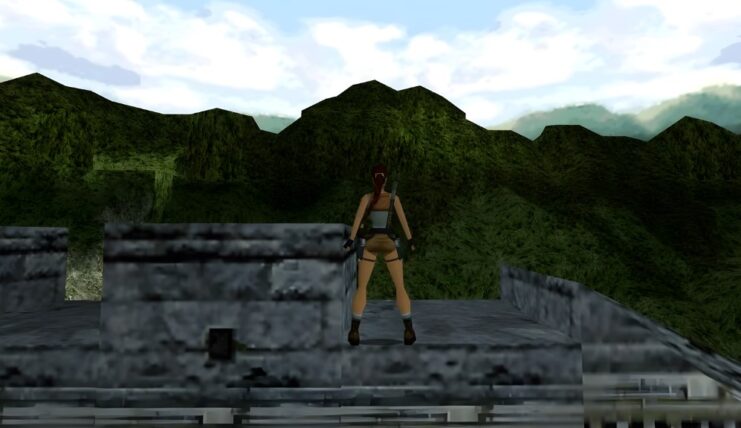
- Developer: Core Design
- Publisher: Eidos Interactive
Building on the success of its predecessor, “Tomb Raider II” expanded the scope and scale of Lara’s adventures. Released in 1997, this sequel introduced new environments, including the Great Wall of China and the canals of Venice. The gameplay was enhanced with new weapons, vehicles, and a greater emphasis on combat.
The storyline followed Lara’s quest for the Dagger of Xian, believed to grant its bearer the power of a dragon. This installment was notable for its improved graphics, larger levels, and the introduction of new moves for Lara, making it a worthy successor to the original.
3. Tomb Raider III (1998)
- Developer: Core Design
- Publisher: Eidos Interactive
“Tomb Raider III: Adventures of Lara Croft,” released in 1998, took players on a globetrotting adventure to locations like India, the South Pacific, and Antarctica. This installment was known for its increased difficulty, with more complex puzzles and deadlier traps.
The game also introduced new vehicles and a greater variety of weapons. The plot centered around the recovery of artifacts from a meteorite crash site, each granting unique powers. “Tomb Raider III” was praised for its ambitious scope and the diversity of its environments.
4. Tomb Raider: The Last Revelation (1999)
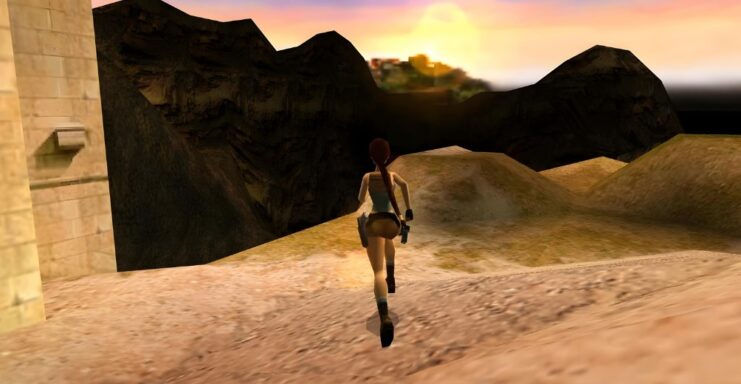
- Developer: Core Design
- Publisher: Eidos Interactive
In “Tomb Raider: The Last Revelation,” released in 1999, players explored the tombs and temples of Egypt. This game returned to the series’ roots with a focus on puzzle-solving and exploration. The storyline involved Lara accidentally unleashing the Egyptian god Set and her quest to re-imprison him.
This installment was notable for its deep dive into Egyptian mythology and the introduction of a young Lara in the tutorial levels, providing background to her character.
5. Tomb Raider (Game Boy Color) (2000)
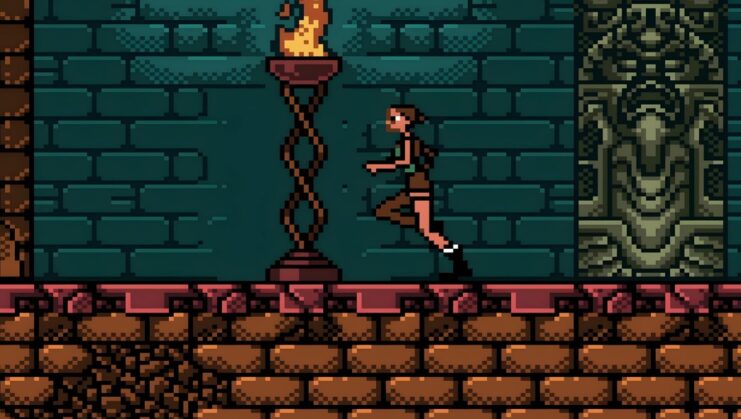
- Developer: Core Design
- Publisher: Eidos Interactive
The year 2000 saw “Tomb Raider” make its debut on the Game Boy Color. This version adapted the 3D gameplay of the main series into a 2D platformer, suitable for the handheld console.
Despite the limitations of the platform, the game managed to capture the essence of Tomb Raider’s exploration and puzzle-solving. The story follows Lara in search of an ancient artifact, with gameplay focusing on navigating through various environments and overcoming obstacles.
6. Tomb Raider Chronicles (2000)
- Developer: Core Design
- Publisher: Eidos Interactive
Released in the same year, “Tomb Raider Chronicles” was a collection of untold stories from Lara’s past. Following the events of “The Last Revelation,” where Lara was presumed dead, her friends reminisce about her past adventures.
This game explored different aspects of Lara’s character and her adventures, including a high-tech heist in a modern setting. “Chronicles” was unique in its narrative approach, offering a deeper look into Lara’s life and experiences.
7. Tomb Raider: Curse of the Sword (2001)
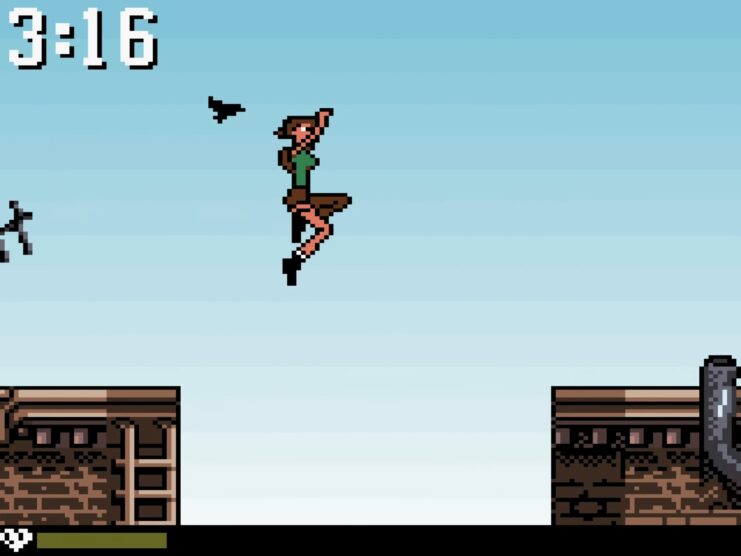
- Developer: Core Design
- Publisher: Eidos Interactive
In “Tomb Raider: Curse of the Sword,” released in 2001 for the Game Boy Color, Lara faced a new supernatural threat. The game’s plot revolves around a cursed sword and a villain’s attempt to resurrect an ancient evil.
This installment continued the 2D platforming style of its handheld predecessor but with a more intricate storyline and improved gameplay mechanics. The game was praised for its engaging story and the challenge it presented to players.
8. Tomb Raider: The Prophecy (2002)
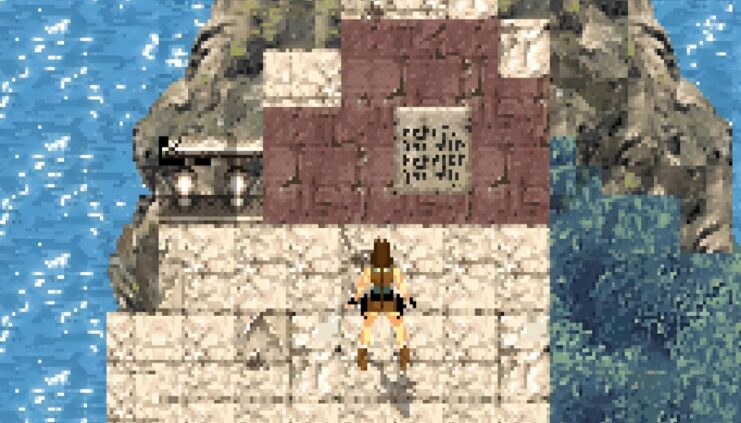
- Developer: Core Design
- Publisher: Ubi Soft
“Tomb Raider: The Prophecy,” released in 2002 for the Game Boy Advance, marked a shift to a top-down perspective, adapting the Tomb Raider formula to the capabilities of the handheld console. The game followed Lara’s quest to prevent the resurrection of an ancient evil being.
Despite the change in perspective, the game maintained the core elements of exploration, puzzle-solving, and combat. “The Prophecy” was notable for its adaptation of the Tomb Raider experience to a different style of gameplay.
9. Tomb Raider: The Angel of Darkness (2003)
- Developer: Core Design
- Publisher: Eidos Interactive
“Tomb Raider: The Angel of Darkness,” released in 2003, was a significant entry in the series, as it attempted to revamp the franchise with a darker tone and more complex narrative. Set in Paris, the game involves a murder mystery with Lara as the prime suspect.
This installment introduced RPG elements, allowing players to upgrade Lara’s skills. However, it faced criticism for its clunky controls and departure from the traditional Tomb Raider gameplay. Despite its mixed reception, “The Angel of Darkness” is remembered for its ambitious attempt to evolve the series.
10. Tomb Raider: Legend (2006)
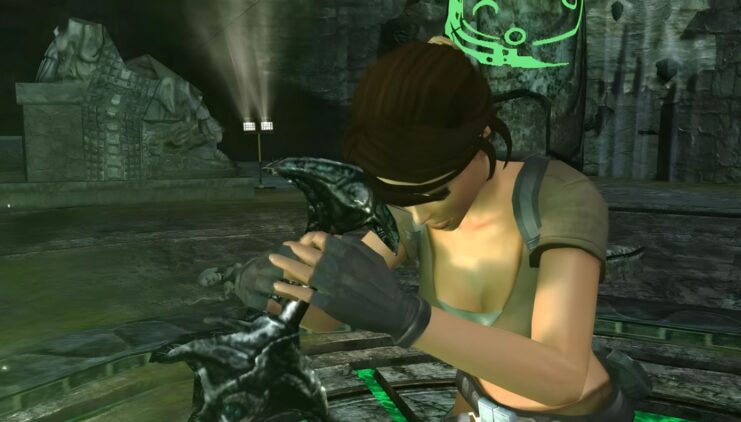
- Developer: Crystal Dynamics
- Publisher: Eidos Interactive
“Tomb Raider: Legend,” released in 2006, marked a significant reboot of the series under the new developer, Crystal Dynamics. This game revitalized the franchise with a focus on Lara’s personal story, exploring her family’s history and the mystery surrounding her mother’s disappearance.
The gameplay was refined with more fluid controls, a dynamic camera system, and a modernized combat system. “Legend” was set in various locations, including Bolivia, Japan, and Ghana, and was praised for its engaging story, improved graphics, and the return to the series’ roots of exploration and puzzle-solving.
11. Tomb Raider: Anniversary (2007)
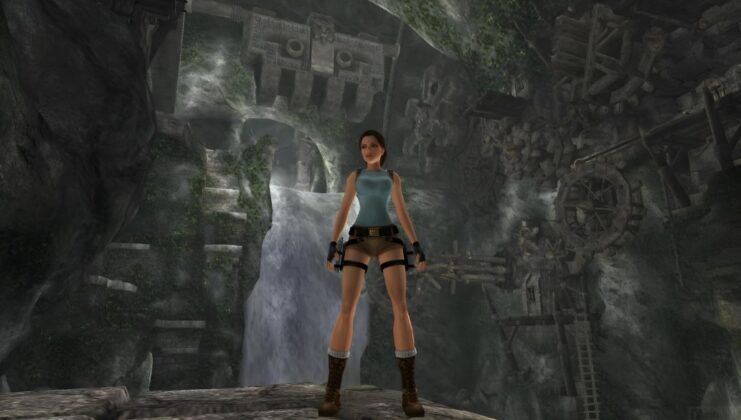
- Developer: Crystal Dynamics
- Publisher: Eidos Interactive
In 2007, “Tomb Raider: Anniversary” was released as a remake of the original 1996 game, celebrating the franchise’s 10th anniversary. This game retold Lara’s first adventure in search of the Scion of Atlantis but with updated graphics, controls, and gameplay mechanics.
“Anniversary” combined the classic elements of the original game with the modern enhancements of “Legend,” resulting in a title that appealed to both long-time fans and new players. The game was lauded for its faithful recreation of the original’s atmosphere and the addition of new content and puzzles.
12. Tomb Raider: Underworld (2008)
- Developer: Crystal Dynamics
- Publisher: Eidos Interactive
“Tomb Raider: Underworld,” released in 2008, continued the storyline from “Legend” and “Anniversary.” This installment focused on Norse mythology, with Lara searching for the mythical hammer of Thor. “Underworld” introduced new gameplay elements, such as an improved grappling hook and the ability to interact with the environment in more complex ways.
The game was notable for its stunning visuals, expansive levels, and the continuation of Lara’s personal story. “Underworld” was well-received for its immersive world and the depth of its exploration.
13. Lara Croft and the Guardian of Light (2010)
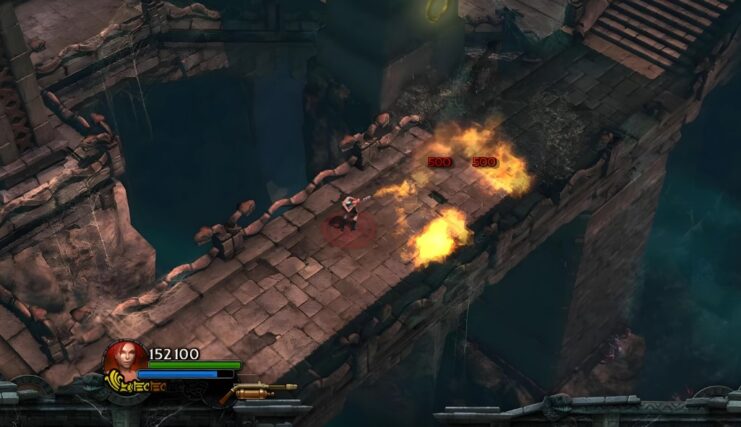
- Developer: Crystal Dynamics
- Publisher: Square Enix
In 2010, “Lara Croft and the Guardian of Light” marked a departure from the traditional Tomb Raider gameplay. This spin-off was a co-op action-adventure game with a top-down perspective, focusing more on combat and puzzle-solving.
Players could control either Lara or a Mayan warrior named Totec, each with unique abilities. The game was set in Central America, where Lara and Totec worked together to stop an ancient evil. “Guardian of Light” was praised for its innovative approach, engaging cooperative gameplay, and refreshing take on the Tomb Raider universe.
14. Tomb Raider (2013)
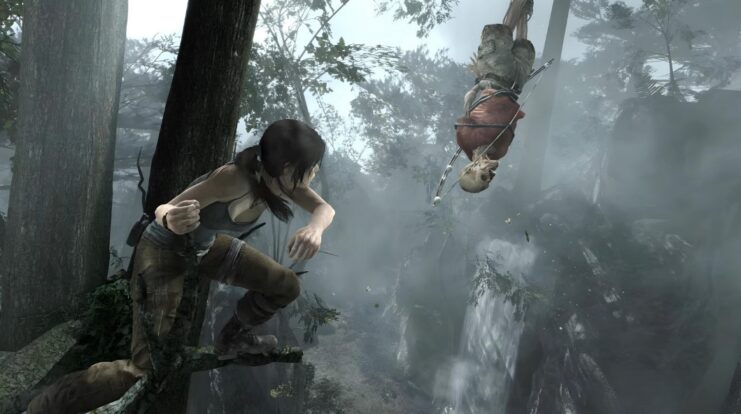
- Developer: Crystal Dynamics
- Publisher: Square Enix
The 2013 “Tomb Raider” game was a complete reboot of the series, presenting a younger, more inexperienced Lara Croft. Set on the mysterious island of Yamatai, the game focuses on Lara’s survival and evolution into the hardened adventurer known from previous games.
This installment introduced a more realistic and gritty tone, with a greater emphasis on survival elements, crafting, and a more narrative-driven experience. The game’s combat system was overhauled, and RPG elements were introduced, allowing players to upgrade Lara’s skills and equipment.
“Tomb Raider” (2013) was critically acclaimed for its compelling story, richly detailed world, and the successful reimagining of Lara Croft’s character.
15. Lara Croft and the Temple of Osiris (2014)
- Developer: Crystal Dynamics
- Publisher: Square Enix
Released in 2014, “Lara Croft and the Temple of Osiris” was a direct sequel to “Guardian of Light.” This cooperative action-adventure game continued the top-down gameplay style, set in Egypt, where players navigated through ancient tombs filled with traps and puzzles.
The game supports up to four players, each with unique abilities and roles in solving puzzles and overcoming obstacles. “Temple of Osiris” expanded on the multiplayer experience, offering a fun and engaging way to enjoy the Tomb Raider universe with friends.
16. Rise of the Tomb Raider (2015)
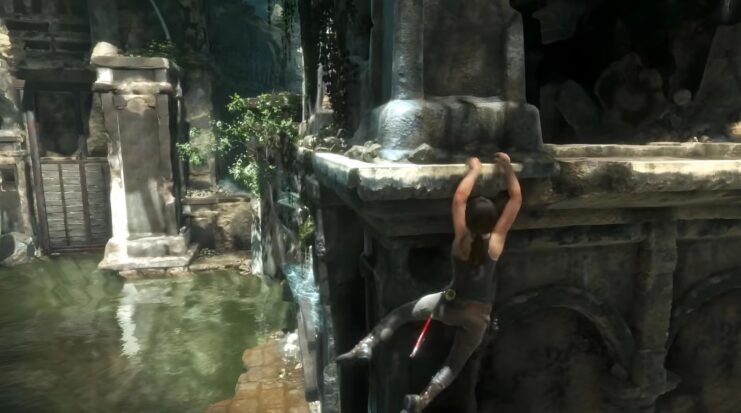
- Developer: Crystal Dynamics
- Publisher: Square Enix
“Rise of the Tomb Raider,” released in 2015, continued the story of the 2013 reboot. Lara embarked on a quest to discover the secret of immortality, leading her to the lost city of Kitezh in Siberia. The game expanded on the mechanics of its predecessor, introducing a crafting system, more complex puzzles, and larger, more open environments to explore.
The narrative delved deeper into Lara’s character, exploring her motivations and the impact of her father’s legacy. “Rise of the Tomb Raider” was praised for its stunning visuals, engaging gameplay, and the development of Lara’s character.
17. Shadow of the Tomb Raider (2018)
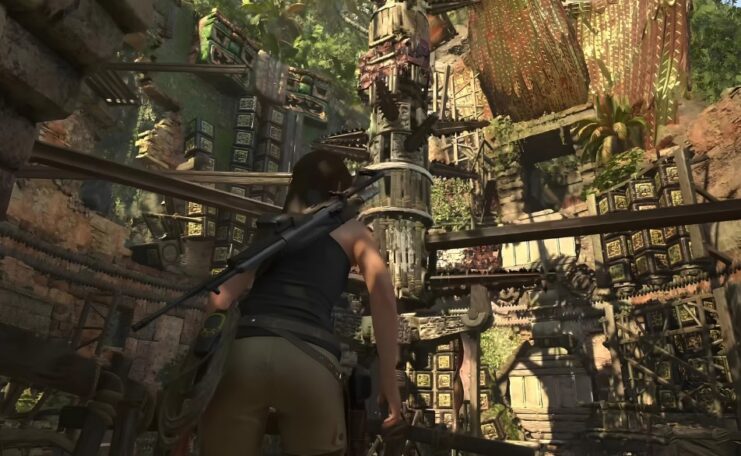
- Developer: Eidos Montréal (in collaboration with Crystal Dynamics)
- Publisher: Square Enix
“Shadow of the Tomb Raider,” released in 2018, concluded the Survivor Trilogy. Set in the Americas, the game saw Lara racing to prevent a Mayan apocalypse she inadvertently set in motion. This installment focused heavily on tomb raiding and exploration, with an emphasis on stealth gameplay.
The game featured a more mature and introspective Lara, grappling with the consequences of her actions and her role as a “tomb raider.” “Shadow of the Tomb Raider” was acclaimed for its challenging puzzles, beautiful environments, and the emotional depth of its story.
FAQs
Is Tomb Raider 2013 connected to Rise of the Tomb Raider?
Yes, “Tomb Raider” (2013) is directly connected to “Rise of the Tomb Raider.” The 2013 game serves as a reboot of the series, introducing a younger Lara Croft at the beginning of her adventures, while “Rise of the Tomb Raider” continues her story, following the events of the first game.
How old is Lara Croft?
Lara Croft’s age varies throughout the “Tomb Raider” series. In the original games, she was typically portrayed in her late 20s to early 30s. In the 2013 reboot, Lara is depicted as a 21-year-old at the start of her adventuring career.
What Tomb Raider game should I play first?
If you’re new to the series and interested in the modern gameplay and storyline, start with “Tomb Raider” (2013), as it’s the beginning of the reboot trilogy. If you’re interested in the classic series, “Tomb Raider: Anniversary” is a good starting point, being a modern remake of the original 1996 game.
Is Tomb Raider a AAA game?
Yes, “Tomb Raider” is considered a AAA game. The series is known for its high production values, including advanced graphics, detailed storylines, and substantial marketing. It’s developed and published by major studios, fitting the criteria of a AAA title. Another prominent AAA franchise is Grand Theft Auto.
Summary
Traversing through the history of the “Tomb Raider” series reveals more than just the technological advancements in gaming; it showcases a narrative evolution and the growth of a cultural icon. Lara Croft, once a polygonal figure leaping across caverns, has transformed into a complex character with a rich backstory, embodying strength, intelligence, and resilience.
It’s clear that this franchise has left an indelible mark on the gaming world, continually redefining what it means to embark on a virtual adventure. Lara Croft’s legacy, much like the tombs she explores, is filled with hidden depths and treasures, waiting to be discovered by new and old fans alike.

